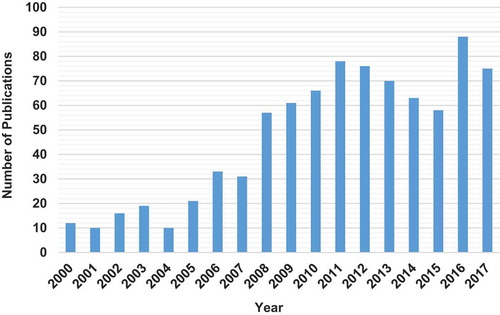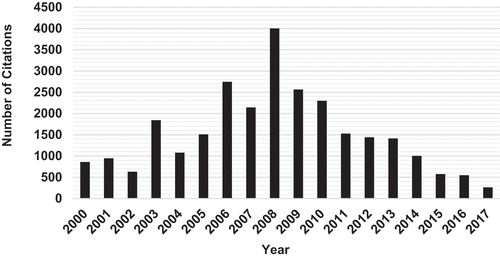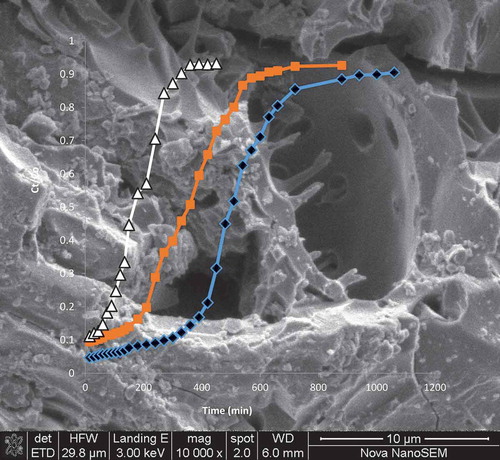Figures & data
Figure 1. Number of papers appearing with “lead” or “Pb” and “biosorption” in the topic listed in the Scopus database for period 2000–2017. Database searched on 23.10.18.

Figure 2. Number of citations of papers appearing with “lead” or “Pb” and “biosorption” in the topic listed in the Scopus database for period 2000–2017. (Total number of articles appearing = 844: database searched on 23.10.18; sum of the times cited = 27, 410; average citations per article = 32.5; h index = 16; articles with zero (0) citations to date = 131).

Table 1. The top 10 most cited articles in the Scopus database appearing with “lead” or “Pb” and “biosorption” in the topic (out of a total of 844 articles appearing: database searched 23.10.18)
Table 2. Classification of initial concentration variations
Table 3. Binary sorption: Pb/Cu system
Table 4. Comparison of total equilibrium sorption capacity for selected biosorbents-Pb/Cu system
Table 5. Ternary sorption
Table 6. Trends in adsorption capacities for monocomponent and ternary systems
Table 7. Selected quaternary sorption systems
Table 8. Major conclusions from selected multi-metal sorption studies
Table 9. Major conclusions from selected studies applying Response Surface Methodology

